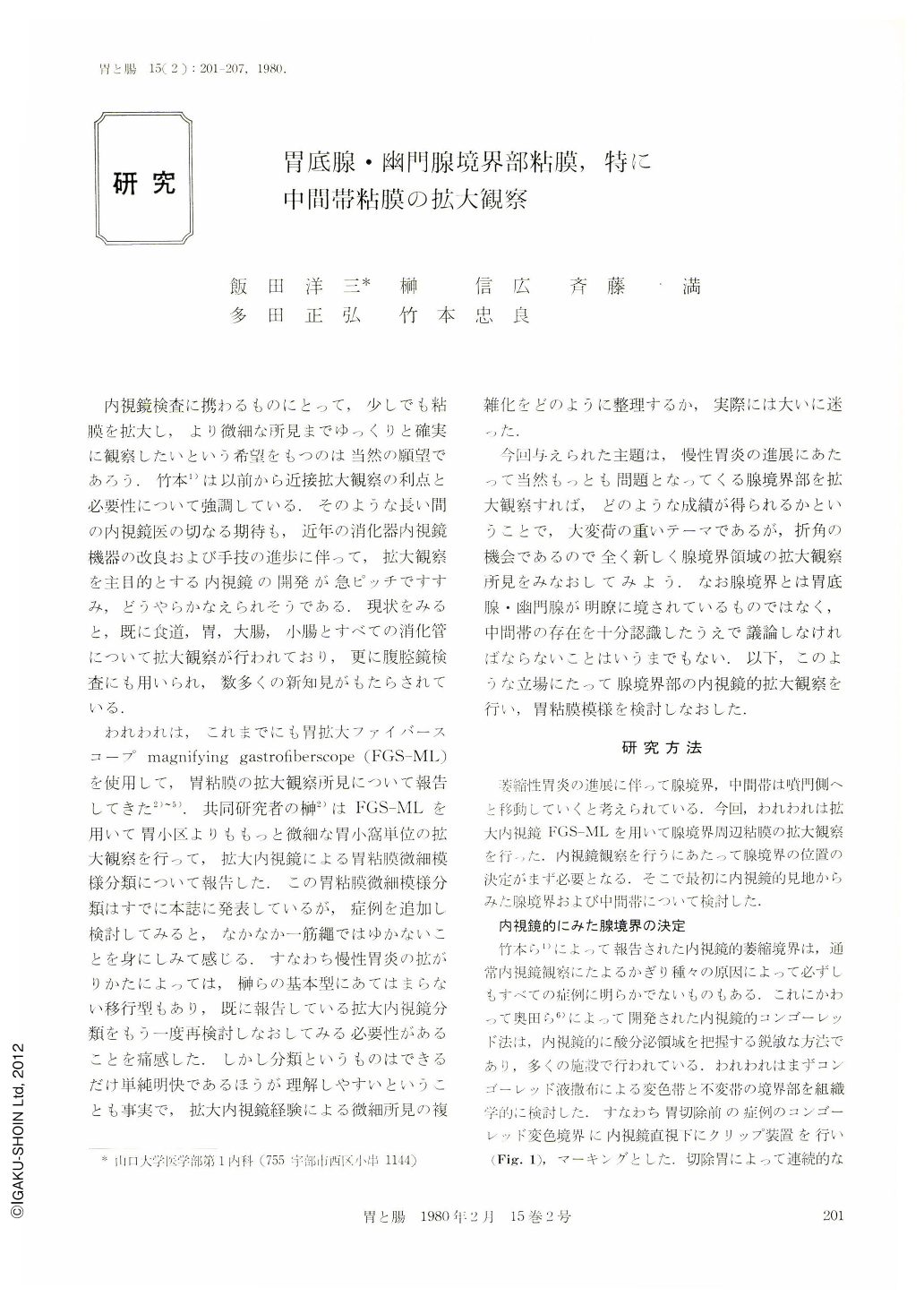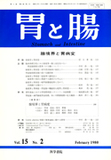Japanese
English
- 有料閲覧
- Abstract 文献概要
- 1ページ目 Look Inside
内視鏡検査に携わるものにとって,少しでも粘膜を拡大し,より微細な所見までゆっくりと確実に観察したいという希望をもつのは当然の願望であろう.竹本1)は以前から近接拡大観察の利点と必要性について強調している.そのような長い間の内視鏡医の切なる期待も,近年の消化器内視鏡機器の改良および手技の進歩に伴って,拡大観察を主目的とする内視鏡の開発が急ピッチですすみ,どうやらかなえられそうである.現状をみると,既に食道,胃,大腸,小腸とすべての消化管について拡大観察が行われており,更に腹腔鏡検査にも用いられ,数多くの新知見がもたらされている.
われわれは,これまでにも胃拡大ファイバースコープmagnifying gastrofiberscope(FGS-ML)を使用して,胃粘膜の拡大観察所見について報告してきた2)~5).共同研究者の榊2)はFGS-MLを用いて胃小区よりももっと微細な胃小窩単位の拡大観察を行って,拡大内視鏡による胃粘膜微細模様分類について報告した,この胃粘膜微細模様分類はすでに本誌に発表しているが,症例を追加し検討してみると,なかなか一筋縄ではゆかないことを身にしみて感じる.すなわち慢性胃炎の拡がりかたによっては,榊らの基本型にあてはまらない移行型もあり,既に報告している拡大内視鏡分類をもう一度再検討しなおしてみる必要性があることを痛感した.しかし分類というものはできるだけ単純明快であるほうが理解しやすいということも事実で,拡大内視鏡経験による微細所見の複雑化をどのように整理するか,実際には大いに迷った.
Authors have reported magnified observation of gastric fovea by using gastric magnifying fiberscopy (FGS-ML) which has×30 magnification. This time, we planned to do magnified observation of the glandular border which has an important role in the progression of atrophic gastritis. Prior to this study, we have to solve the following question―where is the endoscopic glandular border?
To answer this question, we performed endoscopic Congo-red method and the border of discoloration after the Congo-red staining was histologically studied in the resected specimens.
As a result, we could conclude that discolored border of the gastric mucosa due to Congo-red method was the glandular border in a brcad sense which includes traditional zone. As we studied more cases, we noticed that our previously reported classification of the minute gastric mucosal patterns was inadequate, therefore we tried to re-classified them once again. This time, we classified into seven different types, such as A, AB, B, BC, C, CD and D, according to morphology of gastric fovea. Area of the glandular border mainly consists of type B mucosa.
Another words, type A mucosa was seen at the area of fundic gland and if type B element join the type A, it will be consistent with glandular border.
Type AB is a transformed pattern from the type A by the progression of atrophic gastritis, and can be considered as atrophic border in respect of mucosal surface.
Cell infiltration and intestinal metaplasia become prominent in order of type A to D, and patterns of minute gastric mucosa reflect degree of atrophic gastritis to a certain extent.
Therefore, we feel that our new classification is pertinent.

Copyright © 1980, Igaku-Shoin Ltd. All rights reserved.


